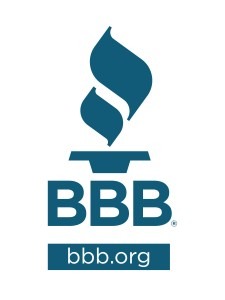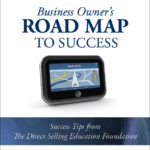The BBB’s Code of Advertising was created to be a helpful guide for advertisers but also is very useful to consumers. It
can help in understanding whether an advertisement is misleading and what stipulations should be met. Should you see or hear an advertisement that you might question, please bring it to a local BBB’s attention so we can check into it further. Here are some questions below to test your knowledge of advertising Do’s and Don’ts:
- If an advertised product is marked as “free”, is it or isn’t it acceptable to use an asterisk(*) to refer to conditions in the fine print below that must be met, to receive the “free” product? According to the BBB Code, an “advertiser must disclose this condition clearly and conspicuously together with the “free” offer (not by placing an asterisk or symbol next to “free” and referring to the condition(s) in a footnote”.
- True or false? When ordering products online, do sellers need to include the cost of postage, tax, shipping and handling, installation, and other fees? “Whenever a price is mentioned in advertising, any extra charges should also be disclosed in immediate conjunction with the price, (e.g. delivery, installation, assembly, excise tax, postage and handling).”
- Is it an advertising offense to place an ad in the paper, where a computer or other product is marked way down and to not have the product available? If the product is intentionally unavailable by the seller, is it a good business practice to promote another more expensive product? Obviously, there are certain, very popular products that are impossible to keep on the shelves, and it is next to impossible to keep up with the demand. However, a business may promote a product because they know it is a draw for consumers and not have it in stock, with the intention of up selling a different product. Since the consumer is already in the store, time is of essence and rather than taking the time to look for this product at another store at the marked down price, a consumer may opt to just buy the higher-priced product. This tactic is known as “bait and switch” and is a big no-no.
- “An advertiser should have on hand a sufficient quantity of advertised merchandise to meet reasonably anticipated demands, unless the ad discloses the number of items available or state ‘while supplies last.’ If items are available only at certain branches, their specific locations should be disclosed. The use of ‘rain checks’ is no justification for inadequate estimates of reasonably anticipated demand.”
- If “easy credit” is offered at a used car business for those, who have bad credit or no credit, is it acceptable to charge higher interest fees? No, it is not acceptable to charge higher fees. The fee schedule and down payment should be the same as for someone with good credit. Phrasing such as “no credit rejected” should be avoided, unless absolutely true. There are definitely consumers, who cannot and will not honor a credit agreement, no matter how good their intentions.
- If a warranty is offered on a product or service, must a business disclose the terms of the offer in writing? “When the term ‘warranty’ (or ‘guarantee’) is used in product advertising, the following disclosure should be made clearly and prominently: a statement that the complete details of the warranty can be seen at the advertiser’s store prior to sale or in the case of mail or telephone order sales are available free on written request.”
- Is it okay for a company to say, “We’re the best!” or “Our product is the best!” in their advertising? Claims of superiority should be objective, measurable against an accepted, industry standard or “performance values of a product or service”. Substantiation should be provided for the claim and should disclose negative as well as positive details. Subjective claims, personal opinions, etc. should be avoided.
- What credentials are required for a person to endorse a product or service in an ad? Can anyone do it? It is recommended that an endorsement is genuine and is quoted in its entirety so misleading information is not given. An endorser should be qualified in a certain area of expertise. For instance, it doesn’t make sense for a world champion boxer to give an expert medical opinion on a new medication, just released for use by the FDA.
- An ad for a new diet product says that you can lose hundreds of pounds and that it is doctor recommended. Does this meet the BBB’s Advertising Code? Ad claims with results such as this should be “based on recent and competent scientific, engineering or other objective data”.
- A retailer has been selling laptop notebooks like crazy and decides to increase the “sale” price of it in an ad? Is this an acceptable practice? “Sale may only be used in advertising, if there is a significant reduction from the advertiser’s usual and customary price of the merchandise offered and the sale is for a limited period of time. If the sale exceeds thirty days, advertisers should be prepared to substantiate that the offering is indeed a valid reduction and has not become their regular price.”
- If a car dealer sells a car “As Is”, is he or she responsible for telling the consumer about any problems with the car? The car dealer does not have to disclose any problems with the car. It is up to the consumer to have the car physically inspected by a reputable car mechanic, prior to agreeing to purchase the vehicle. Should any problems arise, once the vehicle is purchased, it is the consumer’s responsibility to have them fixed.
For further questions regarding the BBB Code of Advertising, visit us online atwww.bbb.org/us/code-of-advertising. For any concerns with advertisements that you may see on the internet, TV, billboard or hear on the radio, please contact your localBetter Business Bureau.


















